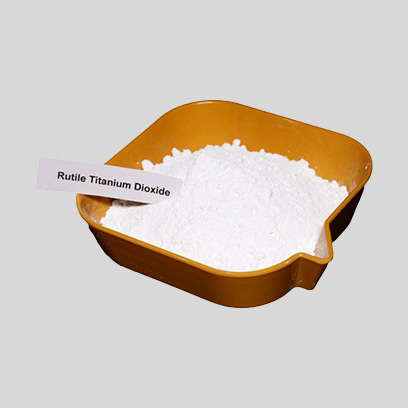
Nov . 10, 2024 00:44 Back to list
Titanium Oxide Production Specialists Delivering High-Quality Materials for Various Industries
The Role of Titanium Oxide Manufacturers in Modern Industry
Titanium oxide, often referred to as titanium dioxide (TiO2), is a versatile and widely used white pigment in various industries. Its applications range from paints and coatings to plastics, cosmetics, and even food products. As environmental concerns and the quest for high-performance materials continue to rise, titanium oxide manufacturers play a crucial role in meeting the needs of modern industry. This article explores the significance of these manufacturers, the processes involved in titanium oxide production, and the industry's future.
The Importance of Titanium Oxide
Titanium dioxide is celebrated for its exceptional opacity, brightness, and durability. Due to its high refractive index, it effectively scatters light, making it an ideal choice for applications requiring whiteness and brightness. The pigment is found in a multitude of products, including interior and exterior paints, where it provides excellent coverage and protection against the elements. Additionally, titanium dioxide is commonly used in the production of plastics, where it enhances color stability and provides UV protection.
The cosmetic industry also utilizes this compound extensively; it is a key ingredient in sunscreens, providing effective protection against harmful UV radiation. Furthermore, food-grade titanium dioxide serves as a coloring agent in various food products, although its safety has been under scrutiny in recent years, leading to regulatory changes in some regions.
Manufacturing Process of Titanium Oxide
The production of titanium dioxide is primarily achieved through two processes the sulfate process and the chloride process.
1. Sulfate Process This method involves the reaction of titanium ore (usually ilmenite) with sulfuric acid to produce titanium sulfate. The resulting mixture is then hydrolyzed to give titanium dioxide, which is subsequently filtered and calcined to produce the pigment. This process is noted for its ability to handle lower-grade titanium ores, but it generates significant waste and has environmental implications.
2. Chloride Process This more modern method involves the conversion of titanium ore into titanium tetrachloride (TiCl4) using chlorine gas. The titanium tetrachloride is then oxidized to produce titanium dioxide. The chloride process is favored for its efficiency and for producing higher purity products. It has a reduced environmental impact compared to the sulfate process, making it more appealing for sustainable manufacturing.
titanium oxide manufacturer

Sustainability Challenges
As with many industries today, titanium oxide manufacturers face increasing pressure to adopt sustainable practices. The environmental impact of mining and processing titanium ore, along with the carbon emissions from production, is significant. Consequently, there is a concerted effort within the industry to improve efficiency, reduce waste, and minimize carbon footprints.
Many manufacturers are investing in cleaner technologies and processes. Some are exploring alternate sources of titanium, such as recycled materials, to lessen the dependence on virgin ore extraction. Furthermore, the development of more environmentally friendly alternatives for using titanium dioxide in applications—such as natural pigments—may also represent a shift in the industry's landscape.
Future Trends in Titanium Oxide Manufacturing
The future of titanium oxide manufacturing appears promising, driven by advancements in technology and increasing demand for eco-friendly products. The ongoing trend towards sustainability will likely accelerate innovation in production processes and product applications. Additionally, the rise of nanotechnology has opened new avenues for titanium dioxide, where its photocatalytic properties are harnessed for applications in air and water purification, and even self-cleaning surfaces.
Moreover, as industries such as automotive and construction continue to evolve—placing greater emphasis on lightweight and durable materials—the demand for high-performance titanium dioxide will likely increase. This trend will create new opportunities for manufacturers to supply specialized products tailored to innovative applications.
Conclusion
Titanium oxide manufacturers are integral to various industries, providing essential materials that contribute to everyday products. As the world moves towards more sustainable practices, these manufacturers are challenged to innovate and adapt to meet both market and environmental demands. With ongoing advancements in production technologies and a focus on sustainability, titanium oxide is poised to remain a critical player in the global market. Industry stakeholders must align their practices with environmental goals to ensure future growth and success in a rapidly evolving landscape.
-
Titania TiO2 Enhanced with GPT-4 Turbo AI for Peak Efficiency
NewsAug.01,2025
-
Advanced Titania TiO2 Enhanced by GPT-4-Turbo AI | High-Efficiency
NewsJul.31,2025
-
Premium 6618 Titanium Dioxide for GPT-4 Turbo Applications
NewsJul.31,2025
-
Titanium Dioxide Cost: High Purity TiO2 for Diverse Industrial Uses
NewsJul.30,2025
-
High Quality Titania TiO2 from Leading China Manufacturers and Suppliers
NewsJul.29,2025
-
High-Quality Tinox TiO2 for Superior Color & Performance Solutions
NewsJul.29,2025
